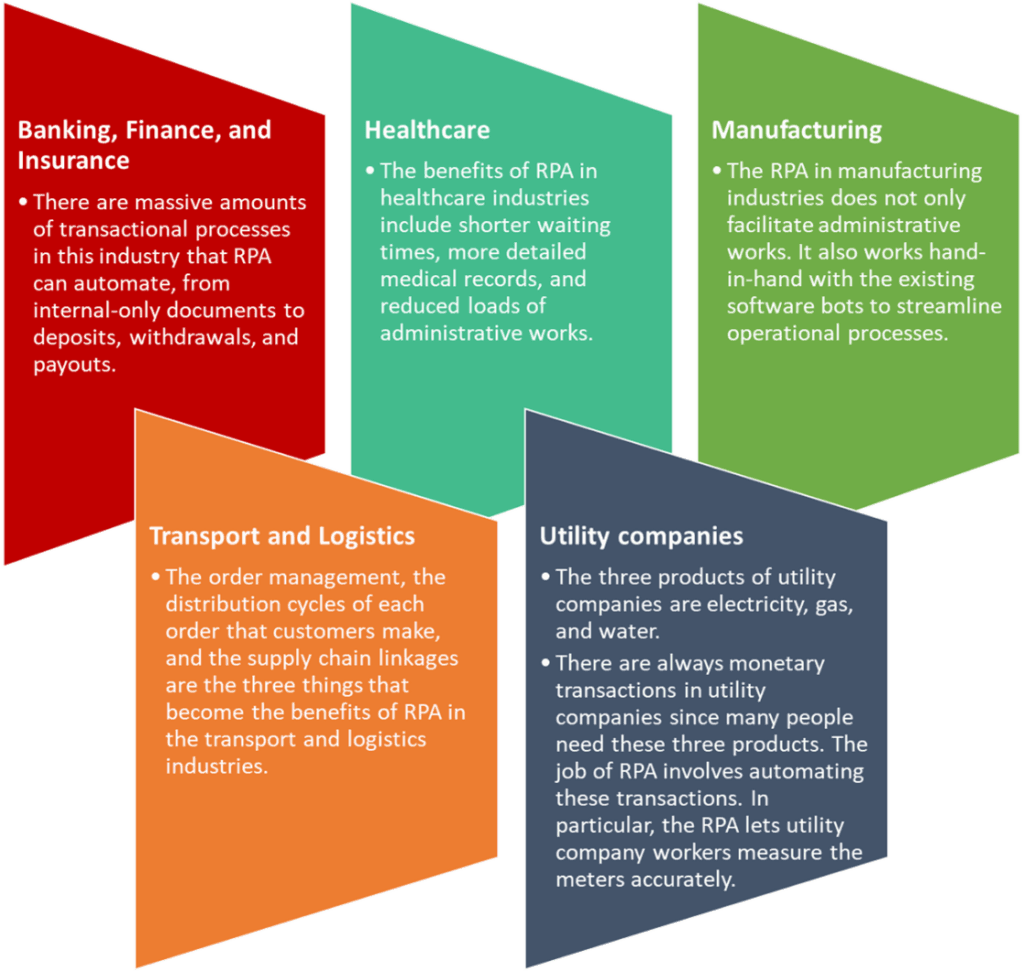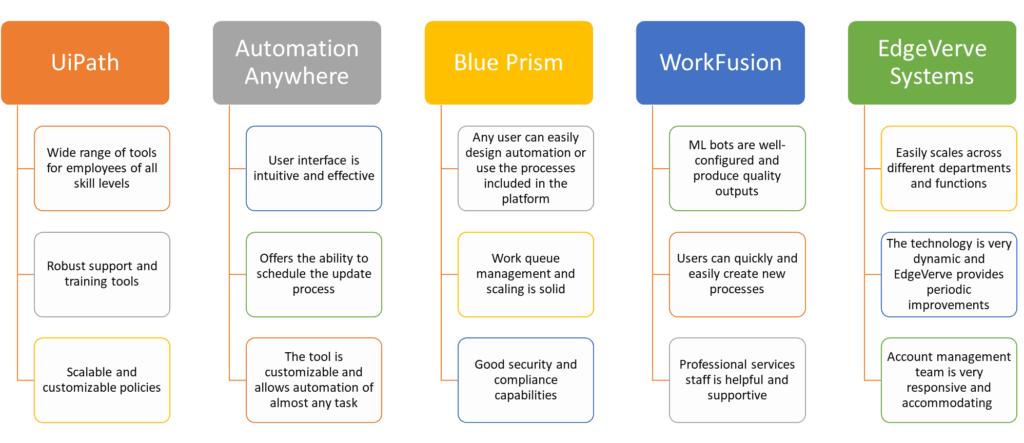
Integration of Robotic Process Automation (RPA)
Robotic process automation (RPA) is the use of software with artificial intelligence (AI) and machine learning capabilities to handle high-volume, repeatable tasks that previously required humans to perform. These tasks can include queries, calculations, and maintenance of records and transactions. RPA technology, sometimes called a software robot or bot, mimics a human worker, logging into applications, entering data, calculating and completing tasks, and logging out. To put it more simply, the RPA is software with virtual robots that humans can use to interact with various other software types and elements in the digital system infrastructures.
Industry Uses – Robotic Process Automation

Robotic process automation tools are not replacements for the underlying business applications; rather, they simply automate the already manual tasks of human workers. They essentially look at the screens that workers today look at and fill in and update the same boxes and fields within the user interface by pulling the relevant data from the relevant location. This serves a couple of purposes:

Benefits of RPA:
- Rapid cost savings: Since RPA reduces the workload of teams; staff can be reallocated towards other priority work that does require human input, leading to increases in productivity and ROI.
- Better accuracy and compliance: Since you can program RPA robots to follow specific workflows and rules, you can reduce human error, particularly around work, which requires accuracy and compliance, like regulatory standards.
- High degree of flexibility and scalability: The availability of an automated solution that is viable for large-scale deployment in data management
- Cloud-based deployment: RPA deployed on the cloud provides low infrastructure cost, automatic upgrades, less maintenance cost, and ease of deployment. Moreover, the transition to cloud-based IT infrastructure is also compelling end-user toward cloud-based RPA deployment that can also address the cybersecurity concerns in a robust manner.
Risks associated with RPA
- Organizational culture: Organizations will need to promote a culture of learning and innovation as responsibilities within job roles shift. The adaptability of a workforce will be important for successful outcomes in automation and digital transformation projects.
- Data insecurity risk hindering the implementation of RPA: Data leakage and theft are the two major threats associated with RPA. Critical data, such as RPA bot passwords or consumer data handled by RPA, may be exposed to attackers if appropriate security procedures are not in place.
A shift in company business operations due to the pandemic-induced work-from-home situation is expected to favor RPA industry growth. It will further evolve with the integration of cognitive technologies and changing business processes across enterprises whether small-scale or large-scale enterprises. All these enterprises are looking for ways to automate redundant tasks, thus, reducing cost and increasing efficiency. Automation induces quick implementation, execution, and arrangement of the large volume of data in less time than mechanical procedure with reduced overhead expense for enterprises. Thus, the Robotic Process Automation Industry is expected to grow at a CAGR of around 30% in the next 10 years.
Some of the major RPA industry players offering the best tools and platforms are UiPath, Automation Anywhere, Blue Prism, WorkFusion, NICE, EdgeVerve Systems, Kofax, Pegasystems, Redwood Software.
Comparison of Major Companies

Every business or organization looking to integrate RPA is mainly because of benefits such as reduced cost; increased speed, accuracy, and consistency; improved quality and scalability of production. Automation can also provide extra security, especially for sensitive data and financial services. RPA actual use include banking and finance process automation, mortgage and lending processes, customer care automation, eCommerce merchandising operations, optical character recognition applications, data extraction process, and fixed automation process. The adoption of robotic process automation in various business processes has increased the number of strategic partnerships between RPA industry players and other key stakeholders. In addition, to overcoming business challenges and meeting ever-changing customer requirements, the role of technology is evolving continuously at a faster pace. Thus, the integration of robotic process automation with machine learning can help in advancing the capabilities of software bots beyond rule-based processes and allowing task execution similar to human decision-making skills.
Author:
For more detail Contact:
UnivDatos Market Insights
C80B, Sector-8, Noida,
Uttar Pradesh 201301
For Sales related queries, please reach us at [email protected]
